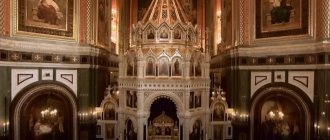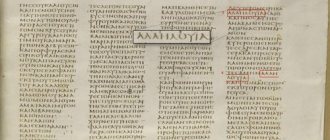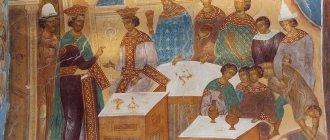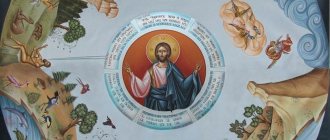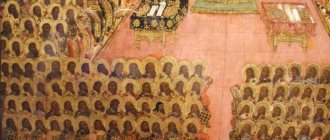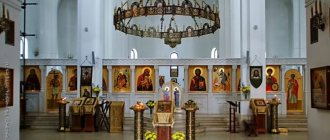German painter and graphic artist Albrecht Durer is considered one of the greatest masters of the Renaissance. They speak of him as the “Leonardo da Vinci of the North.” Thanks to him, engraving became one of the most popular arts of the 16th century. But the real pearl in the artist’s creative heritage can be called the drawing “Hands of a Prayer.”
GettyImages
Like every famous work of art, this work is surrounded by many beautiful, edifying and sometimes very touching legends. Which ones are true and which are lies? Fortunately, Dürer’s letters and autobiography have been preserved, so it is possible to figure it out based on real facts.
Author of the masterpiece
Albrecht Dürer (1471-1528) is one of the greatest masters of painting, graphics and engraving, a practitioner, theorist and promoter of the versatile education of artists as a necessary condition for them to create highly artistic and meaningful objects of art. He also went down in history as the author of comparative anthropometric studies and the developer of military engineering structures.
Albrecht Durer's artistic talent and worldview were formed under the influence of three personalities: his father, a famous jeweler; godfather Koberger, a publisher who left the jewelry business; as well as his best friend Wilibald Pirckheimer, a brilliant humanist who introduced the young Albrecht to the ideas of the Renaissance. He studied in the workshop of Michael Wolgemut, traveled around Europe, getting acquainted with the works of great masters, and always invariably returned to his homeland, Nuremberg. Over time, the artist became more and more interested in engraving, but among the works of 1507-1511 he was predominantly painting. “Praying Hands” was painted when the artist returned from another trip to Venice.
About the nature of the carrier
It is believed that initially such sketches were made on the skin of girls and women because of their emotionality and religious exaltation.
Typically, women are more concerned about the well-being of loved ones, strive to take care of others and show mercy, love and kindness. Including for religious reasons. In her appeals to God, a woman can be very sincere and sincere; perhaps such passion leads to the fact that ladies want to secure their vows and appeals on the body.
But men also often resort to this method of reflecting their religious views. A picture with a praying hero takes up a lot of space, so you should think a lot about where to put it for an effective result. Then it will definitely become an amulet during the life of the wearer.
The tattoo of the hands of a praying person is intended to remind of the existence of the spiritual world, along with the material one. A person should not be immersed only in the pursuit of earthly goods; he should always remember about God and higher powers. Prayer establishes a connection with these forces, fills with strength and inspiration, and fills the emptiness in the soul.
When you don’t have enough strength to fight difficulties, a prayer tattoo will remind you of the promises and commandments of the religious tradition. You can turn to God or gods at a critical moment, when hope of changing the situation almost disappears.
In fact, the Russian Christian Church has always been against the application of religious symbols and texts to the human body. Even in the Old Testament it was said: “Do not put writing on yourself.” But many Catholics and Orthodox Christians consider it necessary to still get a tattoo for their own reasons or out of religious zeal, as a shield from suffering and misfortune.
Researchers' assumptions
There are several versions regarding the purpose of this work:
- Test drawing, sketch for the central, most voluminous part of the “Geller Altarpiece,” a church triptych created by Durer in collaboration with other artists. The hands of the apostle depicted on the lower right, looking at the Coronation of the Virgin Mary, are folded in a prayerful gesture. This version is supported by most art critics;
- A drawing made with special care for one’s own album is an example of skill, which was demonstrated to potential customers as an example and proof of the artist’s capabilities;
- Initially conceived by the artist as self-sufficient, the drawing was one of a huge number of similar ones depicting hands in eloquent gestures that Durer loved to paint. The drawing is considered completed by the chief curator of the Albertina Gallery.
All versions are interesting, and today, five centuries later, it is difficult to say anything with 100% certainty.
Step by Step Instructions for Drawing Hands in Prayer
1. Start by sketching the shape of the hand. Use three curved lines to form the three sides of an open, roughly rectangular shape.
2. Use a series of curved lines to separate the upper arm. Notice the overlap and bump that represents the knuckle. Use an inverted, roughly U-shaped line to outline your thumb.
3. Extend your wrist using a curved line. Then use a long, curved line to connect the sides of the wrist. Use additional curved lines to create folds in the sleeve fabric.
4. Draw three long, curved freehand lines. At the ends, extend the curve so that the lines intersect. They form fingers.
OTHER EASY DRAWING GUIDELINES:
5. Draw another long, curved line to form the third finger.
6. Draw another long, curved line, a little shorter than the others. This forms the last finger.
7. Erase the guide lines from the hand, leaving a clean outline.
8. Draw a second hand behind the first. Start by extending a long, curved line from your wrist to the tip of your little finger. This covers the second hand side. Indicate the other fingertip by drawing a short, curved line between the pinky and ring fingers. At hand, use several overlapping curved lines to form the draping folds of the garment. Finally, use short, curved lines to detail the hand on the palm and the knuckles of the little finger.
OTHER EASY DRAWING GUIDELINES:
9. Detail the hand. Apply small, rounded shapes to your fingertips to indicate your nails. Draw short, curved lines to form the curvature of the knuckles.
10. Color your praying hands.
Would you like to draw more parts of the human body - eyes, noses and ears perhaps? Check out our drawing tutorials for more informative drawing.
Whose hands
On this issue, almost all researchers agree on one opinion - in the drawing of Durer’s hand. Long and nervous fingers, narrow palms, thin wrists and even a crooked little finger are extremely reminiscent of those depicted in other works of the artist. In particular, in the painting of 1500 from the Munich Pinakothek “Self-Portrait in Clothes Trimmed with Fur” and in the “Self-Portrait with a Thistle” painted in 1493, the master’s hands are completely identical. The method of depicting the right hand of a praying person has been established - the master painted it from a mirror image of the left hand. Albrecht practiced this method of depicting himself since childhood: as a 13-year-old teenager, he drew his self-portrait, in the corner of which he wrote that he did it using a mirror. By the way, already in that portrait of 1484 the hand of the novice artist is distinguished by long, thin fingers.
Albrecht Durer. "Hands of a Prayer"
Share
— Margarita Konstantinovna, hello, it’s so good that I met you! The other day I read the story of a painting on the Internet, and I really wanted to tell it to you!
- Hello, Vanechka. I'll be happy to listen.
— Do you remember Albrecht Durer’s work “Praying Hands”?
- Of course, I remember perfectly. I saw this sixteenth-century work in the Albertina Gallery in Vienna, the capital of Austria. But you can refresh the image in your memory by finding it on the Internet. Here you are. A small drawing, slightly smaller than a modern album sheet, made with white and gray paint on paper covered with blue primer. Prayerfully folded palms are drawn with anatomical precision, soft sleeve cuffs at the wrists - nothing superfluous, everything is short and succinct. What interesting things did you learn about this work?
— Imagine, it turns out that Albrecht Durer dedicated it to his brother Albert! They both dreamed of becoming artists, but their father could not pay for their education - after all, there were eighteen children in the family, and there was not enough money. Then the brothers cast lots. Albrecht had the chance to study at the Nuremberg Art Academy, and Albert had to go to the mine to earn money for it. When the lucky man received an education and became rich, he offered to pay for his benefactor’s studies. But Albert replied that he would no longer be able to become an artist - after all, after four years of hard work, his fingers had become rough. Albrecht drew his brother’s worn-out hands.
- The legend is beautiful. But, unfortunately, it cannot be true.
- Why?
- Because it contradicts a historical document - the autobiography of Albrecht Dürer. It says that the artist’s father and mother actually gave birth to eighteen children. But only three survived to adulthood - Albrecht himself, Endres and Hans. Dürer did not have a brother named Albert.
- But maybe Endres or Hans helped Albrecht become an artist?
“Endres was thirteen years younger than Albrecht, and Hans was nineteen years younger, so they could not help him in his youth. Yes, this was not necessary. The boys' father worked as a jeweler and could afford to pay for his son's education. Which is what he did. True, Albrecht did not study at the Nuremberg Art Academy - it opened a century and a half after his death, but at the private school of the experienced painter Michael Wolgemut.
- But whose hands did Durer depict then?
- Most likely, your own. These narrow palms with long fingers and thin wrists are quite recognizable. The same slightly curved little finger can be seen in Albrecht Dürer’s self-portraits. Experts believe that the artist put his left hand to the mirror, and with his right hand he copied it along with the reflection.
- Why did he need it?
— Most likely, the sketch served as an exercise for painting the altar icon, which Dürer worked on in the same 1508. The image of the Virgin Mary surrounded by saints was commissioned by philanthropist Jacob Geller for the monastery in Frankfurt am Main. Several characters in this work are depicted with their hands folded in prayer.
- But it really looks like the drawing “Hands of a Prayer” is a fragment of an icon!
- It seems. In the gesture captured by Dürer, there is a warm feeling for God. The work “Hands of a Prayer” can evoke a prayerful mood. It is not for nothing that in the nineteenth century it became an illustration in several Western editions of the Bible. Christians in Europe gave postcards with a reproduction of the drawing to each other on holidays and placed them in their homes next to icons.
“Perhaps we should hang a reproduction of the drawing above the desk.” I was a little upset when I learned from you that the story about Albrecht Durer and his brother is just a legend. And then I realized that this does not diminish the value of the work at all.
- Agree! And if you have the opportunity to visit Austria, be sure to visit the Albertina Gallery in Vienna. There you will see the original painting “Hands of a Prayer” and you will feel with particular force why it has remained a symbol of turning to God for several centuries.
Where to stuff and in what style
When depicting such a tattoo, 1-2 colors and the realism technique are used. Traditionally, one of the colors is black. The design is also complemented with roses, making a tattoo in the Chicano style.
It so happened that in these techniques, a tattoo of a praying hand with a cross looks best. This symbol is equally suitable for men and women, only girls prefer to use smaller pictures. The image is complemented by rosary beads, crosses, a chain, the names of loved ones and philosophical phrases.
The time required for tattooing in the salon depends on the complexity of the work and will be one or two sessions. Due to the simple plot and palette of two colors, the design is considered difficult to execute, so we recommend having it done by a famous artist so that the tattoo will be to your delight and will successfully complement your image.
